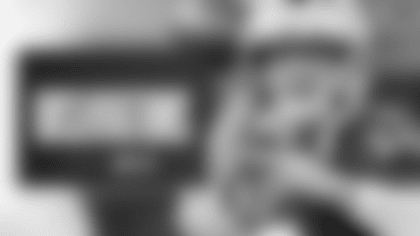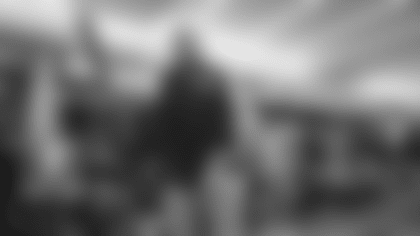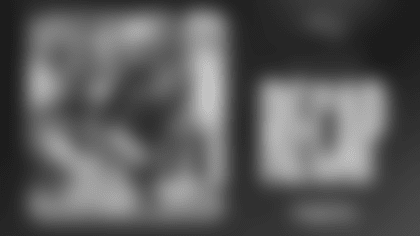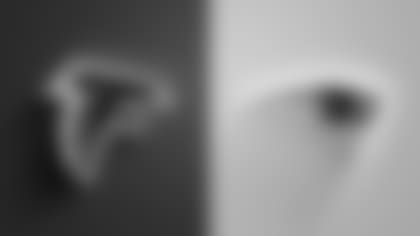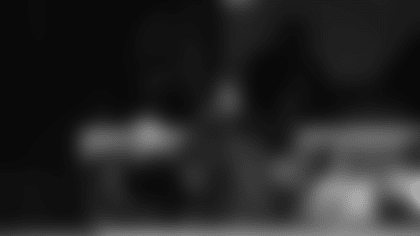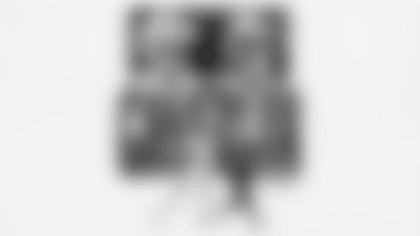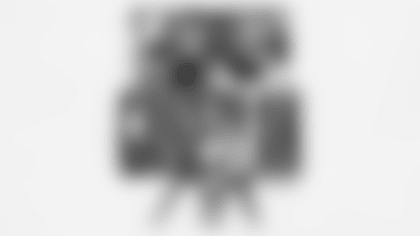The Patriots next destination is the windy city where number-one pick Caleb Williams's Bears will square off with Drake Maye's squad in a battle between rookie quarterbacks.
During the pre-draft process, Williams was the consensus top quarterback in the 2024 NFL Draft. For most, including this scribe, it was Williams, and then there was a toss-up between Maye and Commanders first-rounder Jayden Daniels, with all three guys having franchise quarterback potential. Daniels has run away with Rookie of the Year. However, it's not about year one, it's about the long-term outlook.
One thing Maye and Williams had in common was that they were true juniors entering the NFL. Although he's slightly older than Maye, Williams is also 22 years old, while Daniels spent five seasons in college and is turning 24 later this year. Daniels could be the best quarterback in this class, but it's not surprising that he has been the most pro-ready.
| 2024, As Starter | Drake Maye | Caleb Williams |
|---|---|---|
| EPA/Drop-Back | -0.06 | -0.13 |
| Total QBR | 53.0 | 41.9 |
| CPOE | +1.1 | -1.7 |
| PFF Grade | 68.3 | 61.1 |
Looking at Maye vs. Williams, the Patriots quarterback has slightly outplayed the Bears rookie in a smaller sample size. So far, the Bears first-rounder is sandwiched between Jacoby Brissett and Gardner Minshew as the 27th-ranked quarterback in ESPN's QBR metric (out of 31 QBs). Williams is also 26th in EPA per drop-back (-0.13), compared to Maye, who is 23rd in that metric (-0.06).
To be fair, it's close, and it's very early in their careers. Still, it's also worth noting that Chicago's setup was considered the best out of the top three quarterback selections. Before pivoting from Justin Fields to Williams, the Bears traded the 2023 first-overall pick to Carolina in exchange for four draft picks and WR DJ Moore. Chicago received the ninth overall pick in 2023 (T Darnell Wright), a 2023 second-round pick (CB Tyrique Stevenson), a 2024 first-rounder (QB Caleb Williams), and the Bears still have Carolina's second-round pick in next year's draft – all for Panthers QB Bryce Young.
After acquiring extra draft capital, the Bears had the flexibility to trade for edge rusher Montez Sweat (2024 second) and WR Keenan Allen (2024 fourth). Plus, they still had their own 2024 first-rounder, which they used to select WR Rome Odunze ninth overall this past April. The short story is that the Bears roster was well equipped for a rookie quarterback, with the 11th-ranked defense in DVOA and an offense that had Allen, Odunze, Moore, TE Cole Kmet, and added RB D'Andre Swift in free agency. Chicago went all-out to build up their roster to take a necessary plunge by drafting Williams and trading away Fields.
Although the jury is still out on Williams, the Bears are two games back of a playoff spot in the NFC at 4-4. It hasn't been a home run yet for Chicago, mainly because their offense hasn't met expectations with the 27th-ranked unit by DVOA. However, they made the right personnel decisions, while giving the Patriots a road map for boosting their roster around their young quarterback.
To that end, New England could start building around Maye by trading down to a QB-needy team in the 2025 draft. Then, the Pats can use that draft surplus to make trades and keep adding young talent to their roster. If the Patriots execute a rebuild similar to Chicago's, we'd all consider that a job well done by personnel chief Eliot Wolf.
Let's dig into the schematic chess match on both sides of the ball for the Patriots in Sunday's matchup with the Bears at Soldier Field.
Patriots Offense vs. Bears Defense: Can the Pats Get Their Run Game Rolling?
Starting with Drake Maye and the Patriots offense, one recent theme is how Maye-centric the offense is because New England is struggling to run the football.
The Patriots are 29th in EPA per rush (-0.26) and dead-last in rushing success rate (26%) since Maye became the starter in Week 6. They have just one rush by running backs over ten yards and are producing a league-worst -46 rushing yards before contact in that span. They're the only team in the NFL that is in the red in terms of yards before contact.
In his three full starts, Maye has either led or tied for a team-high in rushing yards, which head coach Jerod Mayo acknowledged is not ideal. When you look at the metrics, the Pats rushing problems are primarily about the blocking. According to NextGen Stats, New England is dead-last in average expected rushing yards by running backs in Maye's starts (3.3), so there isn't much room for lead-back Rhamondre Stevenson and company to churn out yards.
This week, the numbers strongly urge the Patriots to re-establish their traditional run game against a stingy Bears pass defense. Chicago is fourth in pass DVOA with a pass rush that ranks fifth in win rate and tenth in team pressure rate. Conversely, they're 30th in DVOA vs. the run.
Schematically, Bears head coach Matt Eberflus was hired after coordinating the Colts defense for four seasons. As a defensive-minded head coach, Eberflus is primarily responsible for the Bears defense and is the primary play-caller. Eberflus runs a Seattle-inspired four-down defense that majors in zone coverage. Chicago runs zone coverage at the sixth-highest rate (78.6%), with cover three being their primary coverage (40.7%, fifth-highest). They'll run some blitz zone on third-down and early-down creeper schemes, but they're not an overly aggressive defense. Instead, they disguise their coverage shells on the backend and have a formidable four-man pass rush.
Although he's off to a strong start, Maye could use some help from the run game. As it so happens, that's where the Bears defense can be had. Although they're stingy against the pass, Chicago is 30th in rush DVOA and is allowing 5.0 yards per rush attempt this season (28th). Specifically, the Bears have struggled against run-blocking schemes with pullers, like power or counter plays, allowing a league-worst 7.0 yards per rush on those concepts.
Last week, the Cardinals rushed for 213 yards, with only six yards coming from QB Kyler Murray in a 29-9 win over the Bears. Arizona had five runs over 15-plus yards, including a 53-yard touchdown run. The repeat play that the Cardinals used was G/F counter. Arizona pulled the backside guard to kick out the play-side end and then had an off-the-line tight end work across the formation as a lead-blocker up to the second level.
With the success the Cardinals were having in the run game, they made it easier on Murray against a good pass defense by running six play-action plays out of 23 drop-backs (26.1%). Murray went 4-for-6 for 70 yards off play-action, averaging 11.7 yards per play-action pass attempt. Overall, Chicago is allowing 8.7 yards per play-action pass attempt this season.
Here, the Cardinals run the same G/F counter action out of a three tight end set to create conflict in the defense. This time, Murray boots out of the run action, and Arizona releases its tight ends on a levels concept with a short and intermediate crosser. The defense takes the bait, and Cardinals TE Trey McBride catches the easy layup for a 15-yard gain.
Ideally, the Patriots will be able to find success on early downs like the Cardinals did last week. However, eventually, Maye will need to make plays in the drop-back passing game.
With the Bears being such a heavy zone (cover three) defense, Patriots OC Alex Van Pelt will need his zone beaters ready. The drop-back concepts that give the Bears problems are three-level floods into the boundary to put cover-three defenders in conflict. Above, the Cardinals have a vertical clear-out who takes the boundary corner, an out at the second level, and a flat to hold the short zone defender, and Murray finds McBride again to convert a third-and-1.
The other vulnerability is taking deep shots against corners playing the deep third. Although it's zone, those corners are one-on-one on the outside. If you throw into the safety rotation, like Daniels does above, you don't need to worry about the post safety being a factor. One would expect Maye to take a shot or two to Kayshon Boutte or Javon Baker.
Ideally, the Patriots will find some success against a leaky Bears run defense. However, it ultimately will fall on Maye every week to score points. Chicago's stingy pass defense presents a difficult challenge for the Patriots rookie quarterback.
Patriots Defense vs. Bears Offense: Evaluating QB Caleb Williams in Comparison to Maye
Moving over to the defense, it was interesting to study Williams on film this week through the prism of evaluating another first-year quarterback.
Williams entered the league as a former Heisman Trophy winner who catapulted himself to a consensus first-overall pick by being an explosive playmaker. In college, he ranked tied for seventh in his final season (37) and fifth (36) in his Heisman campaign in deep completions over 20 yards. Williams was also in the top 10 in big-time throws in his final two seasons at USC – he was advertised as a Mahomes-like big play machine.
However, Williams and the Bears have surprisingly struggled to generate big plays. The Bears rank 27th in explosive play rate despite having a legitimate supporting cast around their rookie quarterback (11.2%). Individually, Caleb is generating the lowest EPA per attempt on deep throws in the NFL this season (-0.76). Plus, he has the lowest completion percentage over expectation on throws over 15 air yards (-17%).
After racking up big-time throws for the Trojans, Williams is just 26th among 34 qualified quarterbacks in big-time throw rate in his rookie season (2.7%). To his credit, Williams is taking care of the football, ranking 14th in turnover-worthy play rate (2.6%). The Bears are also productive on short and intermediate passes. Williams is eighth in EPA per drop-back on throws under 20 air yards (+0.36) and fifth on in-breaking routes (+0.43).
They've had some success nickel and diming opposing defenses, but overall, the Bears offense is underperforming. Chicago is just 27th in total DVOA, with the 26th-ranked pass offense this season. Although their season is still alive, this wasn't the plan. With all the upgrades at the skill positions, Williams was supposed to lead a high-flying offense.
As a result, offensive coordinator Shane Waldron has taken some flack for the lack of big plays, given Chicago's talent on offense. Waldron, who had a two-year stint early in his coaching career with the Patriots (2008-09), rose through the coaching ranks as a Sean McVay disciple. Waldron started with McVay when the Rams head coach was still Washington's offensive coordinator and followed the offensive innovator to LA. Eventually, Waldron became the Rams passing game coordinator and was hired by Seattle as their OC (2021-23).
With a coaching change in Seattle, Waldron was let go. Eberflus hired him as a coaching free agent this past offseason to develop Williams. Although he's a McVay tree guy, Chicago's offense looks more like a traditional West Coast system, as the Patriots run under Alex Van Pelt. The Bears don't motion much like the Rams, ranking 27th in motion rate, and only loosely subscribe to the condensed formation craze.
Rather than the early-down play sequencing and catch-and-run concepts that McVay is known for, Waldron's offense wins more with spacing and formations. As mentioned, Williams is generating most of his positive plays in the short and intermediate passing game on in-breaking routes, so one would expect the Patriots to focus on those areas of the field.
For example, the Bears will use bunch formations to find favorable leverage for their receivers, as they do above when Odunze wins on a juke route to convert on third down. The other man-beater Chicago runs for Williams is a double digs, where he can throw away from help defenders while picking the pass-catcher who creates the most separation on their route.
When defenses play zone coverage, the Bears spread the field and create matchups. Above, Chicago runs an empty formation, which they do at the tenth-highest clip (8.9%). You might recognize the play call; it's HOSS Juke, where Chicago gets Moore matched up on a non-cornerback out of the No. 3 spot on the juke series for a nice gain.
The other zone-beater you see from the Bears are high-low concepts aimed to put short zone defenders in conflict. In this example, the Jags defense plays cover two, so the Bears put the hook defender in a bind with the arrow route holding the short zone coverage for the in-breaker to fill in behind it to get a chunk on another completion to Odunze.
Another key to this game defensively is accounting for Williams's ability to extend plays. Although he hasn't hit big plays like he did at USC, Caleb is an escape artist. He's an agile ball carrier who can slip out of tackles and has excellent off-platform arm talent to zip passes from various arm angles. Most see some Mahomes in the first-overall pick when he goes into playground mode, but a better comparison might be prime Russell Wilson, who had a similarly slippery style.
Williams has produced 13 EPA+ plays on extended drop-backs, tied for sixth-most, and has accumulated +8.1 expected points added on scrambles. Along with Williams's mobility, Swift is a capable back who can take advantage of a shaky Patriots run defense. Swift has 11 explosive runs this season and capitalizes on the fact that the Bears see a high rate of light boxes. Runs outside the tackles have given the Patriots problems, and Swift has the speed to turn the corner.
Like most rookie quarterbacks, there has been some good and bad from Williams. He does a nice job reading short zones, has shown flashes of thoughtful ball placement to throw receivers open, and has some magic dust to extend plays. However, his developing timing and anticipation on downfield concepts is contributing to his low completion rate on deep throws.
Although he has the better supporting cast, getting a side-by-side comparison of Maye and Williams in Sunday's game at Soldier Field will still be interesting.
Key Matchups
RT Trey Jacobs vs. Bears EDGE Montez Sweat - Sweat is dealing with a shin injury that held him out of last Sunday's game vs. the Cardinals. If he plays, Sweat leads the Bears with 24 quarterback pressures and likes to line up over the right tackle. Sweat's first-step quickness and length are his standout traits, using a long arm as his foundational rush. He gains ground quickly in his first three steps to challenge the corner, which is Jacobs's weakness – a potential mismatch.
CB Christian Gonzalez vs. Bears WR Rome Odunze - It's tough to say who Gonzo will shadow this week, with Odunze and Moore as potential options. They may play sides, but my guess is Gonzo will travel with Odunze on third down, at least. The Bears rookie will move around the formation, lining up in the slot on 26.3% of his routes. Odunze's size and inside-outside versatlity suggest that'll be Gonzalez's main focus.
EDGE Keion White vs. Bears LT Larry Borom - Without starter Braxton Jones last week, Borom started at left tackle last week. The Bears backup tackle allowed three sacks and seven total pressures in pass protection in Week 9. If he's forced to play again, Borom is a potential weak link that the Patriots can target with their best pass rusher, White.
DISCLAIMER: The views and thoughts expressed in this article are those of the writer and don't necessarily reflect those of the organization. Read Full Disclaimer


